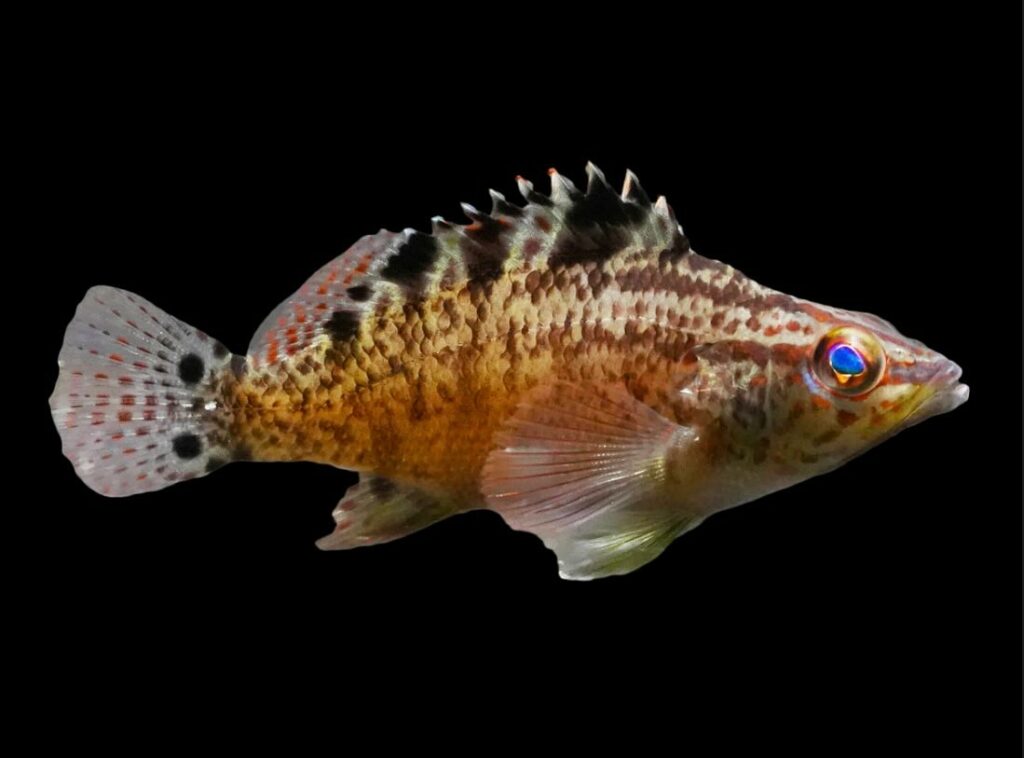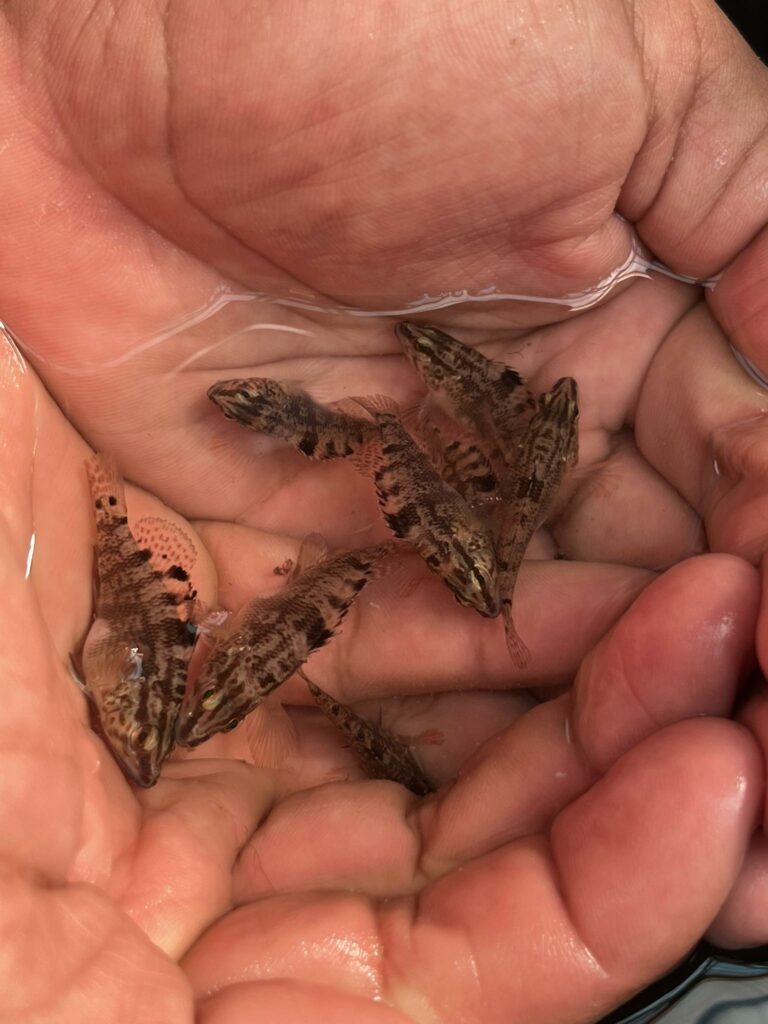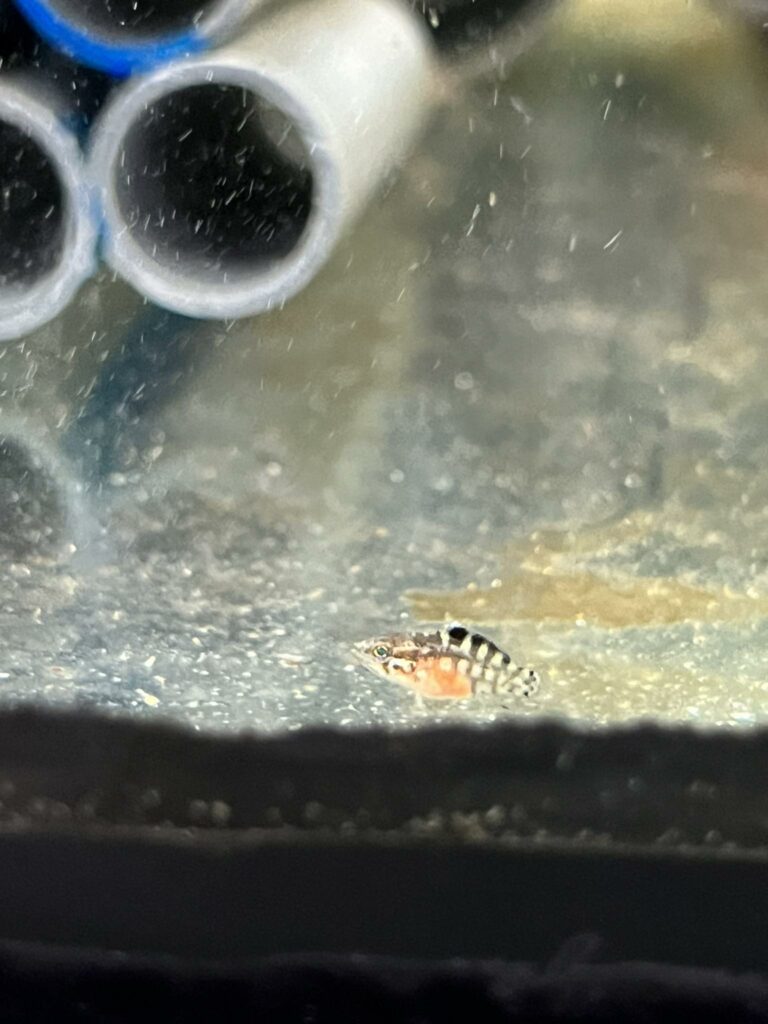
We heard it through the marine aquarium grapevine—specifically Quality Marine’s Facebook page—that there was another new captive-bred species-first hitting the market. It really shouldn’t be a surprise, as Till Deuss, founder of Bocas Mariculture, had hinted at this project in an interview first appearing in the November/December 2023 issue of CORAL (page 104). At the time, Deuss had only gotten as far as obtaining eggs.
In a quick check-in with the team at Quality Marine, Cynthia DeLillo shared some details about the new arrivals. “These Twinspot Bass, Serranus flaviventris, are an aquacultured first by Bocas Mariculture. This batch of fish arrived on Tuesday, February 6, 2024 and they are all doing very well in-house. They are currently being fed a variety of Gamma Frozen Foods (Mysis, Brine Shrimp & Finely Chopped Prawn/Mussel) and Nutramar Complete Pellets.”

When we spoke with Deuss in late 2023, he said he would “choose to target another more colorful species [from the Serranus genus], but I still want to rear a few Twinspots just to do it.” Indeed, Bocas Mariculture has accomplished what they set out to do.
In further follow-up, Deuss reiterated that this species isn’t as productive as Chalk Bass (Serranus tortugarum) and doesn’t spawn every day. “It took the larvae a bit over three weeks to settle,” he reported. Deuss noted that the fish sent to Quality Marine were in the range of 1.5 to 2.5 inches (3.8 to 6.4 cm) in length.

This species is pretty much a trade rarity, if it has ever been collected at all. This is probably due to its subdued coloration and distribution in the tropical western Atlantic in regions that aren’t as readily accessible for aquarium collection. Specifically, this species is notably absent from Florida where many tropical western Atlantic species are collected. Confined to the southern Gulf of Mexico, the east coast of Central America, the Caribbean, and all along the east coast of South America as far south as Uraguay, the Twinspot Bass is probably not uncommon, it’s just not a priority for fish collectors who might be fishing where it resides.
Thus, in a great illustration of how aquaculture can enrich the marine aquarium hobby, the production of the species by Bocas effectively introduces another small, fascinating bass-type fish into the aquarium hobby that otherwise simply wouldn’t be available. “They are of course [synchronous] hermaphrodites, reef safe (except with small fish and shrimps), and reach a maximum size of around 3 inches,” Deuss explained.
The question we have to ask…will this fish have only a limited run in the aquarium hobby, or will it capture enough hearts and minds to sustain a consistent supply? And what, exactly, is the “more colorful species” that Deuss has set his sights on next?




